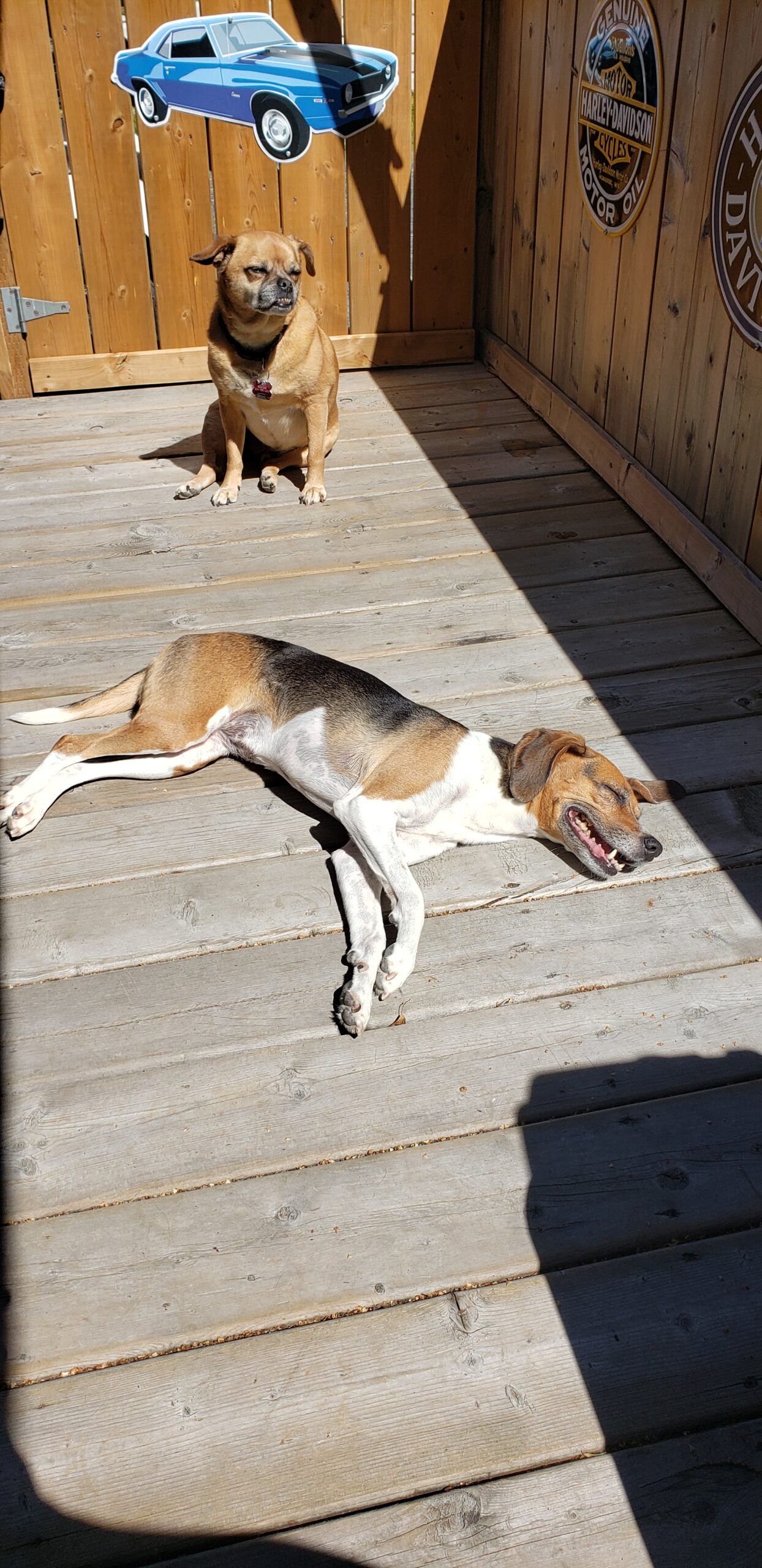More heat coming!
As we are still stuck in a heat wave in Western Canada. A reminder that dogs can get heat stroke.
What pet parents need to know about the heat and their fur babies.
What is Heat Stroke ? Simple put is your dog getting to hot.
Their primary way a dog regulates it’s body temperature is by panting.
Body Temperatures:
- over 103°F (39.4°C) – considered abnormal
- over 103°F (39.4°C) – considered Heat Stroke
- 107°F to 109°F (41.2°C to 42.7°C) – multiple organ failure and impending death occurs
How Can I Tell If My Dog Has Heat Stroke?
Signs of Heat Stroke:
- elevated breathing rates
- may appear lethargic or disoriented
- abnormal gum color
- dry or sticky gums
- can have seizures
How to Prevent Heat Stroke ?
- Don’t leave your dog in the yard without shade for a prolonged time on a hot day.
- Don’t exercise you dog during hot temperatures. Take your pet for walks earlier in the day or at night. Avoid exercise during the hottest parts of the day.
- Pugs, boxers, and bulldogs are at greater risk, as these types of dog have restricted airways due to their noses being flatter.
- A muzzled dog is at a greater risk as they are not able to pant.
How to Treat Heat Stroke
Heat Stroke is an immediate medical emergency. Safe, controlled reduction of body temperature is a priority. Cool water (not cold) may be poured over the head, stomach, armpits and feet, or cool cloths may be applied to these areas. If using cool wet cloths, these should be continually replaced, or they will start to retain heat. Ensure a continuous flow of air across the dog to help increase evaporative heat loss until treatment is received at your veterinary hospital.


